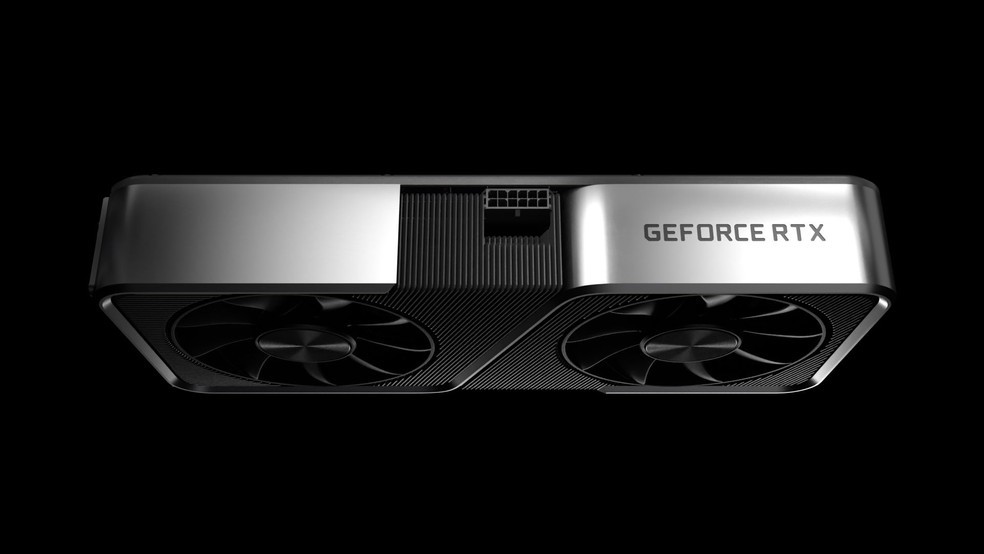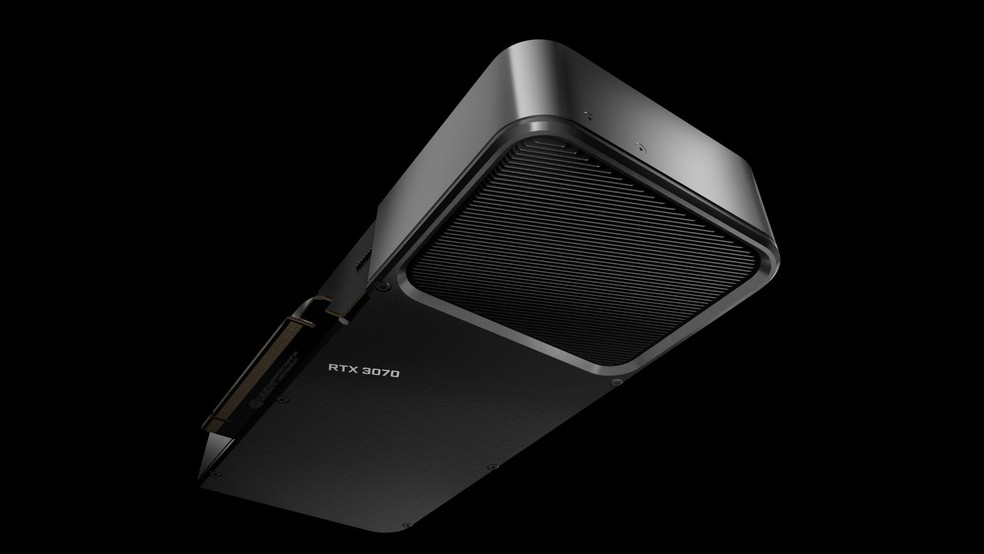Nvidia’s RTX 3070 and AMD’s Radeon RX 6800 are two mid-range video cards launched in 2020. The models promise to run games in resolutions up to 4K, have GDDR6 memory and real-time Ray Tracing support.
Nvidia GeForce RTX 3070 vs. AMD Radeon RX 6800
| GeForce RTX 3070 | Radeon RX 6800 | |
|---|---|---|
| Launch | September 2020 | October 2020 |
| Cores | 5,888 CUDA cores | 3,840 flow processors |
| velocity | 1,500 to 1,725 MHz | 1,700 to 2,105 MHz (1,815 MHz on GameBoost) |
| RAM memory | 8 GB GDDR6 | 16 GB GDDR6 |
| Memory speed | 14 Gb / s | 16 Gb / s |
| Memory interface | 256 bits | 256 bits |
| Bandwidth | 448 GB / s | 512 GB / s |
| TBP | 220 Watts | 250 Watts |
Specifications

The two boards compete for the same space on the market and do so with specifications that differ greatly from each other. The Radeon RX 6800 uses a Navi 21 XL graphics processor (GPU) of AMD’s RDNA2 architecture, which promises to be capable of reaching 2,105 MHz speed via turbo. The processor offers a standard speed of 1,700 MHz and has a clock for games of 1,815 MHz.
The Nvidia board, on the other hand, runs with a GA104 GPU with 1,500 MHz standard speed and can accelerate to 1,725 MHz with turbo. Unlike AMD, Nvidia does not determine a clock band for games.
The core count of each processor is also quite different. In the case of RTX 3070, there are 5,888 CUDA processing cores, while Radeon comes with 3,840 AMD flow processors, organized into 60 computing units.
Both cards process Ray Tracing in real-time and do it with specific processing cores for this task. In Nvidia’s case, the count is 46 RT cores, while AMD’s board adds 60 RT cores. It’s important to remember that the name “RT cores” is generic and that, given the differences between the architectures of the two brands, an AMD RT core is not the same as an Nvidia RT core.
RAM also has striking differences between the two boards and the most obvious of these is the amount. In the Radeon RX 6800, there are 16 GB of GDDR6, while the Nvidia card comes with half of that. In both cases, this RAM exchanges data with the GPU via a 256-bit interface and does so at 512 GB/s on the Radeon and 448 GB/s on GeForce.
Performance

In general, the tests that compare the Radeon RX 6800 with the GeForce RTX 3070 in rasterization, which can be understood here as a process of graph synthesis without driven Ray Tracing. Tests on the TechRadar site show AMD up to 24% faster on 3DMark Fire Strike in 4K, for example.
In games, the numbers are smaller, but the delta persists. In Metro Exodus in 4K and without Ray Tracing, Radeon is only 3 fps faster but can yield up to 25% in Far Cry 5 and Assassin’s Creed: Odyssey. In Red Dead Redemption 2, the RX 6800 is 10% higher than Nvidia.
These numbers are backed up in TechPowerUp and Guru3D tests: in general, the user can expect RX 6800 to be faster than RTX 3070 without Ray Tracing triggered.
With Ray Tracing, the Nvidia board recovers ground and can be up to 10% faster than AMD in games that take advantage of this technology. Considering the advantage of DLSS – a technology that doesn’t exist in Radeon – GeForce turns out to be more versatile.
Consumption

The two boards are similar in the energy requirement index to work. Nvidia, for example, classifies the GeForce RTX 3070 as a board with a TBP of 220 Watts. This means that, at the limit, the Nvidia board will consume 220 Watts of power to operate.
AMD indicates that Radeon needs 250 Watts. It is worth remembering that these power levels indicate a limit and high demand scenario that hardly corresponds to 100% of the time the board is used. Besides these data, the two manufacturers also recommend the use of 650 Watts of power sources in computers equipped with GPUs.
Price and Availability
Availability and prices of the two plates still fluctuate a lot in the national market. In our searches, we found the RTX 3070 available in Asus, Gigabyte, MSI, Inno3D, and Zotac versions starting from $900.
More recently in the market, Radeon has even more limited offers and appears sold out in specialized stores, although it can be found in some marketplaces with a price of around $1000.
Cost-benefit
Both boards have the same profile and similar performance in recent games, although Radeon is faster in settings without Ray Tracing (and more expensive). However, given Nvidia’s already more stable offer on the domestic market, including more affordable prices, and superior performance with the use of the technology, in addition to the great advantage of DLSS, it’s hard to ignore GeForce’s strengths in this comparison.
This post may contain affiliate links, which means that I may receive a commission if you make a purchase using these links. As an Amazon Associate, I earn from qualifying purchases.

